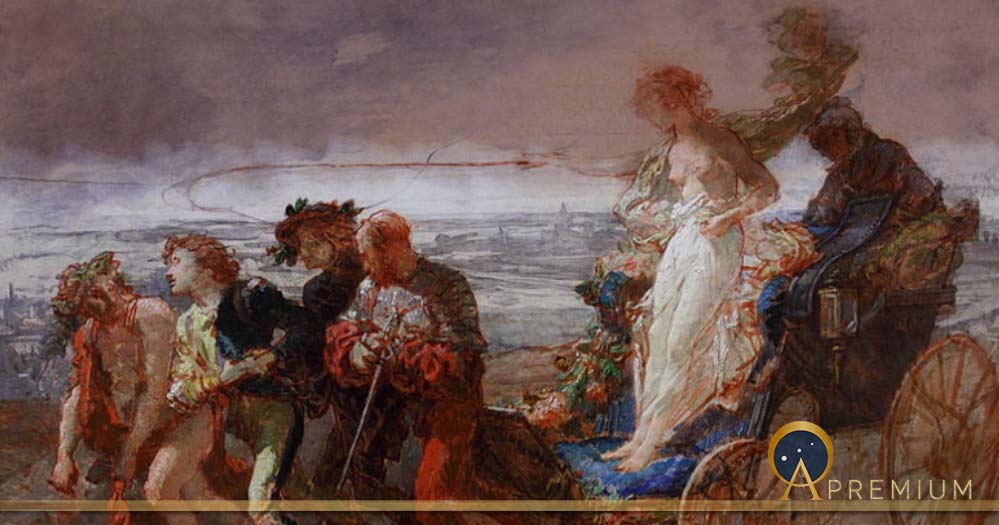Women Of Independent Means, Revered Ancient Courtesans
One day, the 19th-century courtesan, Esther Guimond, was traveling through Naples when she was stopped for a routine examination of her passport. When asked her profession, she quietly and discreetly told the official that she was a woman of independent means. Seeing the puzzled look on the official’s face, she exasperatedly declared, “ Courtesan! Take care to remember it!”. Then, perhaps feeling somewhat liberated by this word coming out of her own mouth, she told him audaciously to “ go and tell that Englishman over there.” On her death certificate of 1845, Harriette Wilson, the famous British Regency courtesan and mistress of significant and very public men such as Major-General William Craven, First Earl of Craven, and statesman Arthur Wellesley, First Duke of Wellington, is discreetly described as a “ woman of independent means.”

Courtesans in the Countryside by Rupert Bunny (1920) (Public Domain)
Life As A Courtesan
A courtesan is a paramour of society's wealthy and elite men. She entices her client not only with her beauty and seductive qualities, but also with her education, talents and charm. For a high fee, a courtesan would entertain as well as provide companionship to the man she is with such as accompanying him to a social event instead of his wife. These women came from a variety of backgrounds. Some grew up impoverished and moved to a town where they learned to “sell” themselves, not just for sex, but as a woman with much more to offer. Others were actresses who continued to perform both on and off the stage. She may have begun her career as an assistant or companion to another courtesan to learn the trade, or she may have begun as a mistress to a wealthy man.
As women began to realize the degree of freedom and independence they enjoyed by becoming a courtesan, widows, divorcees, and even upper-class women sought out the courtesan lifestyle. A very successful courtesan could be very wealthy and even host parties in her own home. The life of a courtesan was considered opulent. However, even when the courtesan was no longer considered young, beautiful, and desirable, some women retained a large number of clients through their intelligence, wit, knowledge and engaging personalities. Others who did not fare as well faded into obscurity, perhaps marrying or retiring into an ordinary existence.
As courtesans operated in hierarchical societies that emphasized court cultures, they are well-worth studying not only for their arts, but also for their roles as indicators of political and social change.
Like this Preview and want to read on? You can! JOIN US THERE ( with easy, instant access ) and see what you’re missing!! All Premium articles are available in full, with immediate access.
For the price of a cup of coffee, you get this and all the other great benefits at Ancient Origins Premium. And - each time you support AO Premium, you support independent thought and writing.
Martini Fisher is an Ancient Historian and author of many books, including “Horatio’s World” | Check out MartiniFisher.com
Top Image: La Courtisane by Thomas Couture (1864) (Public Domain)

















